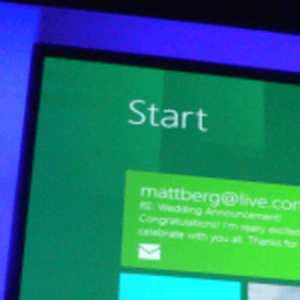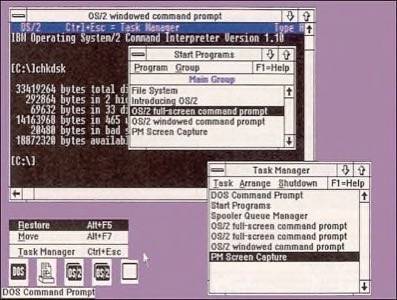After watching Microsoft lurch toward completion of Windows 8 and trying out a few of its early versions, I am struck by a tremendous sense of déjà vu. It took me some time to figure out why I was feeling this way, and then it hit me: Win 8 is on track to become the OS/2 of today, and suffer a similar and ignominious fate.

Don’t get me wrong: I was a big OS/2 fanboy. I even wrote a book about OS/2 in the enterprise, which was never published. But I think it is useful to recall the mistakes of computing yesteryear and see if we can try to avoid them in the present.
Back in the late 1980s, Microsoft worked with operating systems designers at IBM to produce a successor to the venerable DOS. OS/2 attempted to solve a real problem: Having only 640KB of RAM for running your programs and OS made it hard to do more than one thing with your PC at any given time. That’s right: We are talking kilobytes, which is about the amount of RAM in your average coffee pot these days.
Back then we had various tricks for running other things in memory, or for extending that meager memory space, but they weren’t easy. But this was all to get around the underlying issue: We needed the ability to run multiple programs concurrently and switch easily among them. Today, we take that for granted, and indeed, with the average multiple-monitor desktop rig – which brings to mind an air-traffic controller – we run dozens of programs and have all sorts of things open at any one time.

By the time OS/2 was finished, which was a long slog as hundreds of coders worked in dozens of cities around the world, it was basically irrelevant. Windows did a much better job of allowing for multitasking anyway. Intel had come out with better chip sets too, and the world had moved on.
All this meant that IBM and Microsoft were serving different masters when they worked on OS/2. It’s no wonder they had trouble reaching common ground and ultimately split up, with Microsoft developing Windows and IBM trying to continue to improve OS/2.
Now look at what is going on with Windows 8. It also began its life trying to solve one problem (having the same OS on desktops, tablets and phones) but really trying to solve something else: how to beat Apple with a better tablet OS. That doesn’t bode well. The misfire of Vista, an OS that no one could love or care about, is already behind us. All that Vista accomplished was to put XP more firmly in our minds and keep it on our desktops longer. Could an OS really serve two masters equally well? Wait a minute, didn’t I just answer that question?
One of OS/2’s problems is that its protected mode was very bad at running legacy apps. Almost none of the DOS apps ran on the first several OS/2 versions. Sound familiar? Win 8 is also having problems running legacy Windows XP apps.
When OS/2 was being built, most people were using 8-bit apps and didn’t really care much (unlike the tech writers) about the move toward 16-bit computing. Because of the upgrade, it was hard to find OS/2 drivers for peripherals such as printers. In my book from 1988, I had written, “UNIX has been able to offer just about everything OS/2 intends to offer for more than a year.” Little did I know that Unix would find its way inside the Mac OS and take off in subsequent years. Now we are used to the world of 32-bit and have trouble caring about 64-bit apps, and we have issues finding drivers for 64-bit Windows. Hmm.
Win 8 also has two different personalities, the old style “Start” that it inherited from XP and the new “Metrosexual” button display that it seems to have inherited from Windows Mobile. OS/2 started out with a simple text-only task switcher and quickly got a graphical UI that was crude and looked like something from a mainframe terminal designer.
(Thanks to PC Magazine for the archive screen shot.)

As Nokia and Microsoft work on Win 8, they might end up going their separate ways too, with one doing an OS optimized for phones and the other for PCs and tablets.
OS/2 came with communications and database servers built-in, at least with the IBM version. But these were ahead of their time. Now most OS’s have full comms and database capabilities. Ironically, one of the hardest challenges that many business app developers have with the iPad is the lack of a built-in database and the APIs to access the same.
So will Win 8 be more like OS/2 or XP in terms of success? Hard to say at this point. But the similarities are somewhat chilling.





















